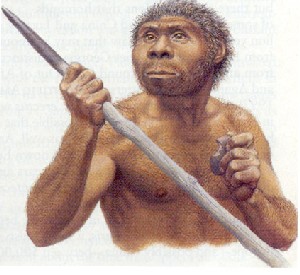
Great Discoveries in Palaeoanthropology
This page chronicles the major discoveries in the history of paleoanthropology. It will gradually be built up over the coming months to show how some of the most famous finds in this scientific discipline came about.
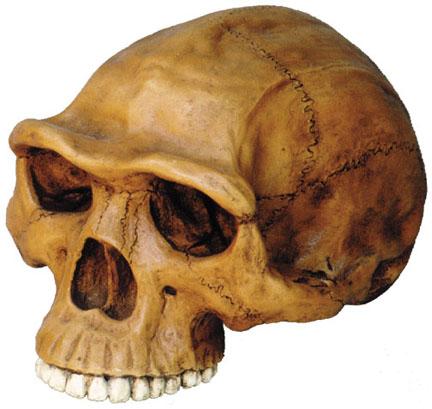
Discovery one
Pithecanthropus erectus
Eugene Dubois, was a Dutch physician, who wished to take up the investigative study of human evolution, inspired by the Neanderthal fossils from the Spy cave in Belgium.
He approached his mentor, the famous Ernst Haeckel, a German Zoologist, to ascertain where he should look, ie; Europe or Africa.
Haeckel advised him to go to Asia, particularly as the Dutch East Indies was in the height of its powers over there.
In 1887, Dubois joined the Dutch army, and used his influence to be posted in the Dutch East Indies, now called Indonesia.
He ended up on the island of Java, where he enlisted the help of convicts to look for human fossils. His endeavours eventually paid off when teeth, a thighbone and partial skull were unearthed at Trinil on the banks of the Solo river in 1891.
He called his find Pithecanthropus erectus in honour of Haeckel. Now changed to Homo erectus.
His discoveries were rejected by the scientific establishment for many years, and he famously hid the fossils under floorboards of his house. He became bitter towards scientists looking at them and died in 1940 an unhappy man.
Discovery Two
Taung Child
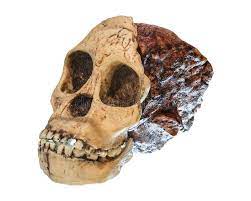
Raymond Arthur Dart was an Australian anatomist who, in 1922, took up the post of Professor at theanatomy department, at Witwatersrand University in Johannesburg, South Africa.
He was in receipt of material sent from the Buxton Limework quarry near the town of Taung, which he scanned for interesting fossils.
In November 1924, he was sent two crates of material. Dart immediately recognised one block of breccia as being a potential skull. As the measurements were greater than that of a chimpanzee or baboon, he was intrigued.
He spent the next few weeks chipping away at the breccia with his wife’s knitting needles. Eventually he revealed the skull of a hominin child.
He named the skull Australopithecus africanus.
It was many years before the Taung Child was accepted by the scientific community as a human ancestor, but Raymond Dart is now considered one of the forefathers of palaeoanthropology.
Discovery three
Peking Man (Sinanthropus erectus)
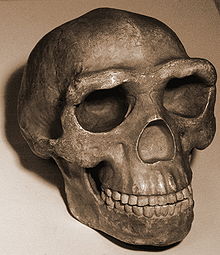
The site of the Zhoukoudian hills are an hour or so drive from Beijing.
I visited the site in 2011 with my wife and a friend.
The history of the hominin finds there are quite famous in palaeoanthropology.
It started in 1921, when Swedish archaeologist Johan Gunnar Andersson was working with Austrian Otto Zdansky at a dig in Zhoukoudian, at a place called Longgushan or Dragon Bone Hill. That year Zdansky found the first hominin teeth.
However, apart from another tooth, nothing was found until 1929, when Canadian, Davison Black was in charge of proceedings at the dig site.
Pei Wenzhong discovered a skullcap, and that was the start of a trove of amazing hominin finds. Several more skullcaps were excavated with stone tools, with evidence of the use of fire.
During the second Sino-Japanese war, in 1941, the fossils were packed up and put on transport to the ship SS Harrison, to avoid falling into Japanese hands.
What happened to the fossils, no one knows unto the present day.
Fortunately, before the loss of the fossils, extensive casts were made by the German Franz Weidenreich.
The name given to the hominins that occupied the area from around 780,000 to 230,000 years was Sinanthropus erectus. However, like the Javan fossils, this has now been changed to Homo erectus.
There are several localities at the Zhoukoudian site, Locality one being the most abundant in fossil remains.
Another site nearby, called Upper Cave, had the remains of three Homo sapiens skeletons from around 30,000 years ago.
Discovery four
Lucy (AL288-1)
The most famous Australopithecus find, comes from Hadar, in the Awash Valley of the Afar Triangle in Ethiopia.
It was discovered by Don Johanson of the Cleveland Museum of Natural History and his co-worker Tom Gray in 1974.
The skeleton of this Australopithecus is 40% complete and is dated to 3.2 mya.
The find was named after the Beatles song, 'Lucy in the Sky with Diamonds'. Lucy was 3ft 7in tall and weighed 64lbs.
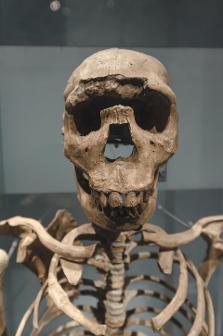
Discovery Five
Turkana Boy (KNM-WT 15000)
Also known as Nariokotome boy, this is Lake Turkana's arguably most famous discovery.
It is the nearly complete skeleton of a 5ft 3in tall, Homo ergaster, that lived 1.6mya. Turkana boy was a youth that died at the age of 8 or 9 years from possibly a tooth infection,
It was discovered in 1984 by Kamoya Kimeu on the banks of th Nariokotome river in West Lake Turkana, Kenya.
The skeleton was excavated thereafter by such famous names as Richard Leakey, Alan Walker, Pat Shipman and Meave Leakey.
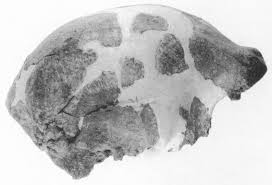
Discovery Six
Ceprano Man (Argil) Homo cepranensis
A broken hominin calvarium was discovered after a highway construction project was undertaken near Ceprano, Frosinone, Italy in 1994.
The archaeological recovery of the skull and fossil fauna also exposed, was handed over to Italo Biddittu.
The crania was constructed initially by Henri and Marie de Lumley, and then a second reconstruction by Ron Clark, under the guidance of curator Antonio Ascenzi.
Due to biographical stratigraphy dating, the cranium was originally dated at 900,000 years old.
This date has been revised by Giorgio Manzi and co, to between 380kya and 450kya, based on geostratigraphic and archaeological correlation to the nearby site of Fontana Ranuccio.
The cranium morphology resembles a mixture of Homo erectus & Homo heidelbergensis features.
A complete five year study of the calvarium was undertaken by Dr Rob Walsh, of the Lewis Research Unit between 1997-2002. This showed the greatest affinities between Ceprano and OH9 skull from Olduvai Gorge.